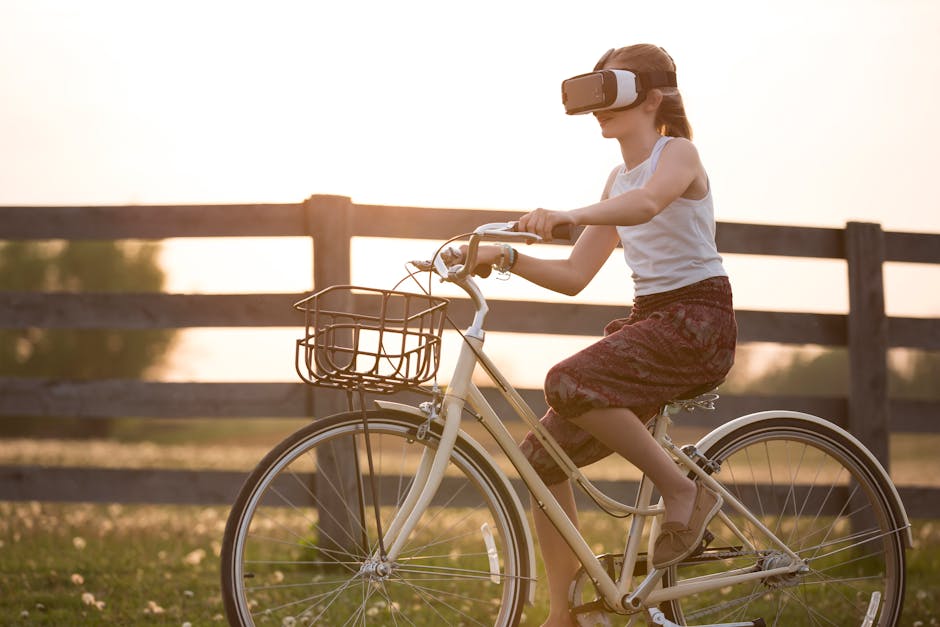The Metaverse in Education: Crafting Immersive Learning Experiences
Imagine a classroom where the boundaries of traditional learning are stretched beyond physical walls, where students explore ancient civilizations not just through textbooks, but by walking through virtual recreations. The Metaverse in education is shifting how we experience learning, fostering engagement and collaboration through immersive virtual interactions. This innovative frontier is enhancing educational experiences, allowing students to connect with concepts in ways that were once the stuff of science fiction. Let’s delve into this brave new world and explore how the Metaverse can transform education for the better.
Understanding the Metaverse

At its core, the Metaverse is a digital universe that fosters shared experiences in virtual environments, blending augmented reality (AR) and virtual reality (VR) to create a new space for interaction and exploration. Think of it as an extensive network where users can create, learn, and socialize in immersive ways. This concept is particularly potent in education, where the Metaverse holds the potential to facilitate deeper, more meaningful learning experiences.
As we progress toward 2025, educators and institutions are beginning to embrace this emerging technology, incorporating it into curricula to enhance engagement and retention. Unlike traditional education models, the Metaverse offers a dynamic and interactive learning environment, breaking down geographical barriers and accessibility challenges.
The Benefits of Immersive Learning

Enhancing Engagement

Using immersive technologies in education, like VR and AR, can significantly boost student engagement. Traditional lecture-based learning often leads to disengagement, especially in subjects perceived as dull. In contrast, immersive experiences can captivate students' attention and create an interactive learning atmosphere.
For instance, imagine a biology class where students can view and manipulate a 3D model of the human body, interacting with organs and systems directly through VR headsets. This experiential learning can help students grasp complex scientific concepts far more effectively than through textbooks.
According to the Harvard Business Review, immersive learning environments cater to various learning styles, making them accessible and appealing to a broader range of learners.
Promoting Collaborative Learning

The Metaverse fosters an environment of collaboration unlike any traditional classroom could offer. Students hailing from different parts of the world can come together in virtual classrooms, engage in discussions, and work on projects in real-time. Imagine a history assignment where students from different countries come together in a virtual representation of the ancient Roman Forum, discussing its significance while exploring its architecture.
This kind of collaborative learning not only helps students develop social skills and emotional intelligence but also encourages them to embrace diverse perspectives. Tools that promote collective problem-solving and critical thinking are vital in preparing students for the future work environment, where teamwork and collaboration are essential.
Personalized Learning Experiences

The flexibility of the Metaverse allows for personalized learning experiences tailored to each student's needs. Educators can track progress through various metrics and adjust educational content accordingly. External resources, such as AI-driven tools, can analyze how students engage with materials in a virtual setting and customize lessons based on their strengths and weaknesses.
For instance, a student struggling with math concepts can enter a tailored game designed to reinforce their understanding and provide practice without the fear of judgment from peers. By promoting a sense of individualization, the Metaverse encourages students to learn at their own pace.
Crafting Immersive Learning Experiences

So, how can educators craft effective immersive learning experiences using the Metaverse? Here's a snapshot of several strategies:
1. Gamification in Learning

Incorporate game mechanics into learning to increase engagement and motivation. As described in the Gamifying Grit framework, game elements like rewards, challenges, and leaderboards can foster resilience and encourage students to push through challenges.
2. Virtual Field Trips

Utilize virtual reality platforms to take students on field trips that transcend geographical limitations. Whether it's exploring the Louvre Museum, hiking the Grand Canyon, or diving into the Great Barrier Reef, these experiences can provide rich, interactive learning opportunities without the logistical barriers of real-life field trips. The rise of Virtual Reality Expeditions in education has made once-inaccessible experiences available to all students.
3. Interactive Storytelling

This technique engages learners by creating narrative-driven experiences. Students can be part of the story—make decisions, face challenges, and explore outcomes collectively. As noted in Unlock the Power of Storytelling, blending narratives with learning encourages critical thinking skills and retention.
4. Social Presence and Community Building

Fostering a sense of community in virtual learning spaces is paramount. As students interact within the Metaverse, creating avatars, attending events, and participating in discussions, they become part of a larger community. Platforms that support these social interactions can ease loneliness and provide a supportive environment for collaboration.
5. Real-Time Feedback

The Metaverse allows for instantaneous feedback through quizzes, polls, and interactive tasks. When students are aware of their performance in real time, they are more equipped to understand their progress and any areas needing improvement.
Ethical Considerations in the Metaverse

As we navigate this transformative landscape, it’s crucial to consider the ethical implications surrounding education in the Metaverse. Data privacy, accessibility, and the digital divide must be addressed to ensure a fair and equitable learning environment. An excellent resource on this subject can be found in Harness Digital Ethical Dilemmas, which delves into the ramifications of technology in education.
The Future of Learning

Looking forward to 2025, the Metaverse is poised to revolutionize education further. With rapid advancements in technology, from AI to biometric sensors, learning can become even more tailored to individual needs. We stand on the brink of a new era in which students can experience education not just as information delivery, but as a fully immersive adventure.
In particular, the integration of AI personalities and digital empathy training could help foster emotional intelligence in online learners, setting them up for success in increasingly complex social environments. Unlocking Student Success with Emotional Intelligence will be foundational to navigating this brave new world.
Next Steps for Educators and Learners

As we begin to integrate the Metaverse into educational frameworks, educators should take practical steps to ensure its effective adoption:
-
Invest in Training: Teachers should receive training on how to effectively employ immersive technologies in the classroom. Understanding both pedagogical theory and technical operation is crucial.
-
Pilot Programs: Start with pilot programs to experiment with different tools and methodologies. Collect data on student engagement and learning outcomes to tweak the approach.
-
Embrace Innovation: As technology evolves, remain open to new tools and resources that can enhance the learning experience.
-
Focus on Collaboration: Engage with fellow educators, tech specialists, and students to develop the most effective and engaging learning experiences.
-
Evaluate and Adapt: Regularly review the integration of immersive technologies, adapting methods based on student feedback and technological advancements.
The potential of the Metaverse in education is vast, offering innovative pathways to engage students and make learning more accessible, interactive, and meaningful. By embracing these technological shifts and focusing on rich, immersive experiences, we can create a future where education knows no boundaries.
Final Thoughts
The Metaverse presents an exciting opportunity for education to transcend traditional methods, providing immersive and interactive experiences that foster engagement, collaboration, and personalized learning. As technology continues to evolve, educators must harness its benefits while maintaining a focus on ethical practices, community, and accessibility. By taking proactive steps today, we can craft a future where learning transforms into an engaging adventure—a journey tailored for each individual student.



